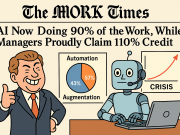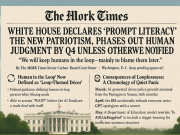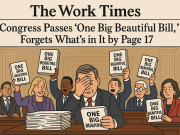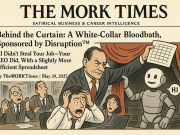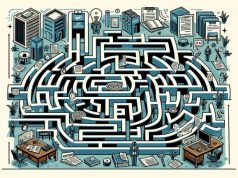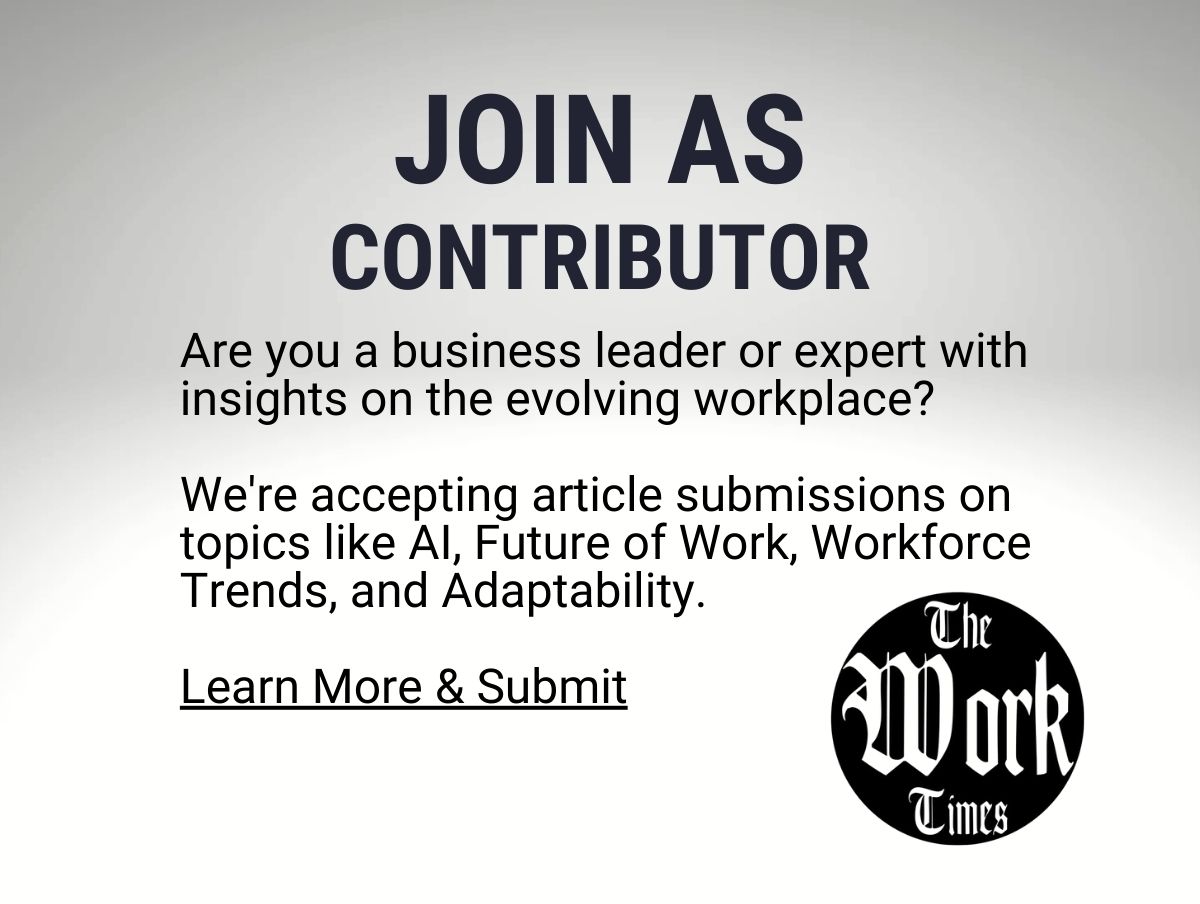A New Vision for the American Workforce
The U.S. government has unveiled an ambitious national workforce blueprint—America’s Talent Strategy—designed to future-proof the labor market and position the country for what officials call a “Golden Age” of opportunity. Anchored in five interlinked pillars—demand-driven training, worker mobility, integrated systems, accountability, and AI readiness—the strategy is not just about filling today’s job vacancies; it’s about building a sustainable, inclusive, and competitive workforce for decades to come.
This editorial takes a deep dive into each pillar, explores the benefits and challenges of implementation, and examines how coordination between the Departments of Labor, Commerce, and Education could make or break its success.
Pillar 1: Demand-Driven Training
At the heart of the strategy is a shift from supply-driven to demand-driven workforce training. Rather than preparing workers with generic skillsets, programs will be designed in direct collaboration with employers, ensuring that training pipelines align with real-time labor market needs.
Benefits:
- Relevance: Workers will be trained in skills employers are actively seeking, reducing skills gaps.
- Efficiency: Training dollars will go toward high-impact programs that result in immediate employment.
- Employer Confidence: Businesses gain a direct role in shaping the talent pipeline, improving hiring outcomesRoadblocks:
- Regional Variation: Workforce needs vary widely across states and industries; a one-size-fits-all curriculum won’t work.
- Lag in Training Response: Adapting training programs quickly to meet emerging needs—especially in fast-moving tech sectors—requires agility that traditional institutions often lack.
Pillar 2: Worker Mobility
A modern economy requires a workforce that can move—geographically, across industries, and into new roles—without losing momentum or financial stability. The strategy emphasizes policies and support systems that enable mobility, such as portable benefits, streamlined credential recognition, and relocation assistance.
Benefits:
- Economic Flexibility: Mobility helps balance labor supply and demand across regions.
- Career Growth: Workers can pursue higher-paying opportunities without being locked into a single industry or location.
- Resilience: Geographic and sector mobility reduces unemployment risk when industries face disruption.
Roadblocks:
- Cost of Moving: Relocation remains financially prohibitive for many workers, even with incentives.
- Licensing Barriers: State-by-state licensing rules can slow or block mobility in regulated professions.
- Family and Community Ties: Social and family obligations can limit willingness or ability to relocate.
Pillar 3: Integrated Systems
This pillar seeks to connect workforce development, education, and economic systems into a unified infrastructure that supports workers throughout their careers. This could include shared data platforms, cross-agency coordination, and better linkage between public and private resources.
Benefits:
- Data-Driven Decisions: Real-time labor market analytics can guide program funding and policy direction.
- Efficiency: Reduces duplication of efforts across agencies, saving taxpayer dollars.
- Continuity: Workers receive coordinated support from multiple services—education, job placement, and career counseling—without falling through the cracks.
Roadblocks:
- Technology Gaps: Many state and local systems are outdated, making integration challenging.
- Data Privacy Concerns: Sharing worker and employer data across agencies requires robust safeguards.
- Institutional Resistance: Agencies accustomed to working in silos may resist integration.
Pillar 4: Accountability
The strategy commits to transparent performance measurement for all workforce programs, with funding tied to outcomes rather than just participation. This includes tracking job placement rates, wage growth, and long-term career advancement of program graduates.
Benefits:
- Better ROI: Taxpayer funds are directed toward programs that deliver measurable results.
- Public Trust: Transparency fosters confidence in government workforce initiatives.
- Continuous Improvement: Data on program effectiveness allows for timely adjustments.
Roadblocks:
- Metrics Complexity: Not all benefits of workforce programs can be captured in numbers—especially for underserved communities.
- Short-Term Bias: Focusing too heavily on immediate employment outcomes could overlook longer-term benefits like career sustainability and upskilling.
- Administrative Burden: Collecting and analyzing robust data can be resource-intensive for smaller programs.
Pillar 5: AI Readiness
Acknowledging that artificial intelligence is rapidly transforming industries, the strategy emphasizes preparing workers to thrive alongside AI. This includes expanding AI literacy, training in AI-augmented job functions, and ensuring equitable access to emerging tech opportunities.
Benefits:
- Future-Proof Skills: Workers are less likely to be displaced and more likely to access higher-paying tech-enabled roles.
- Innovation Boost: A tech-savvy workforce attracts investment and drives competitiveness.
- Inclusion: With proactive planning, AI benefits can be shared across the workforce, not just concentrated in tech hubs.
Roadblocks:
- Access Inequality: Without targeted outreach, disadvantaged communities risk being left out of AI opportunities.
- Rapid Technological Change: Training programs must evolve constantly to stay relevant.
- Ethical and Safety Concerns: Workforce AI readiness must include awareness of bias, privacy, and responsible AI use.
Interagency Coordination: The Make-or-Break Factor
Implementing this strategy will require unprecedented coordination among the Department of Labor (DOL), Department of Commerce, and Department of Education. Each has a distinct but interconnected role:
- DOL: Oversees workforce programs, labor standards, and training outcomes.
- Commerce: Ensures economic growth policies align with workforce capabilities.
- Education: Shapes curricula, funding mechanisms, and credential frameworks.
Key Coordination Needs:
- Unified Funding Streams: Avoid fragmentation by pooling resources for joint initiatives.
- Shared Data Standards: Establish consistent metrics to evaluate success across programs.
- Employer Partnerships: Engage businesses through public–private advisory councils spanning multiple departments.
Without this level of alignment, even the most well-designed policies risk duplication, inefficiency, or outright failure.
Aligning with Economic Competitiveness and Social Mobility
The broader goal of America’s Talent Strategy is not just to prepare people for jobs—it’s to expand economic opportunity and strengthen national competitiveness. By aligning training with employer needs, enabling mobility, integrating systems, enforcing accountability, and embracing AI, the strategy aims to:
- Raise Median Wages: Equipping workers with high-demand skills supports wage growth.
- Reduce Inequality: Targeted outreach to underserved groups ensures broader access to opportunities.
- Boost Innovation: A more adaptive and tech-ready workforce can attract new industries and global investment.
- Enhance Resilience: A diverse and mobile talent base can better withstand economic shocks.
Potential Pitfalls and the Path Forward
While the vision is compelling, execution will determine its legacy. Some potential pitfalls include:
- Underfunding: Ambitious programs without adequate resources will underperform.
- Political Shifts: Workforce strategies need bipartisan support to survive election cycles.
- Inequitable Implementation: Benefits must reach rural, low-income, and marginalized communities, not just urban or tech-centric regions.
The path forward will require transparent communication, community engagement, and iterative adaptation. Employers, educators, and local governments must be active partners—not passive recipients—of federal plans.
Conclusion: A Moment of Opportunity
America’s Talent Strategy represents one of the most comprehensive workforce plans in recent history. If implemented effectively, it could catalyze a transformational era of opportunity, equipping American workers for a rapidly changing economy and positioning the United States as a global leader in both innovation and inclusivity.
However, the “Golden Age” is not guaranteed. It will take disciplined execution, sustained funding, and genuine collaboration across sectors to ensure that every American—regardless of background or geography—has a fair shot at success in the 21st-century workforce.











